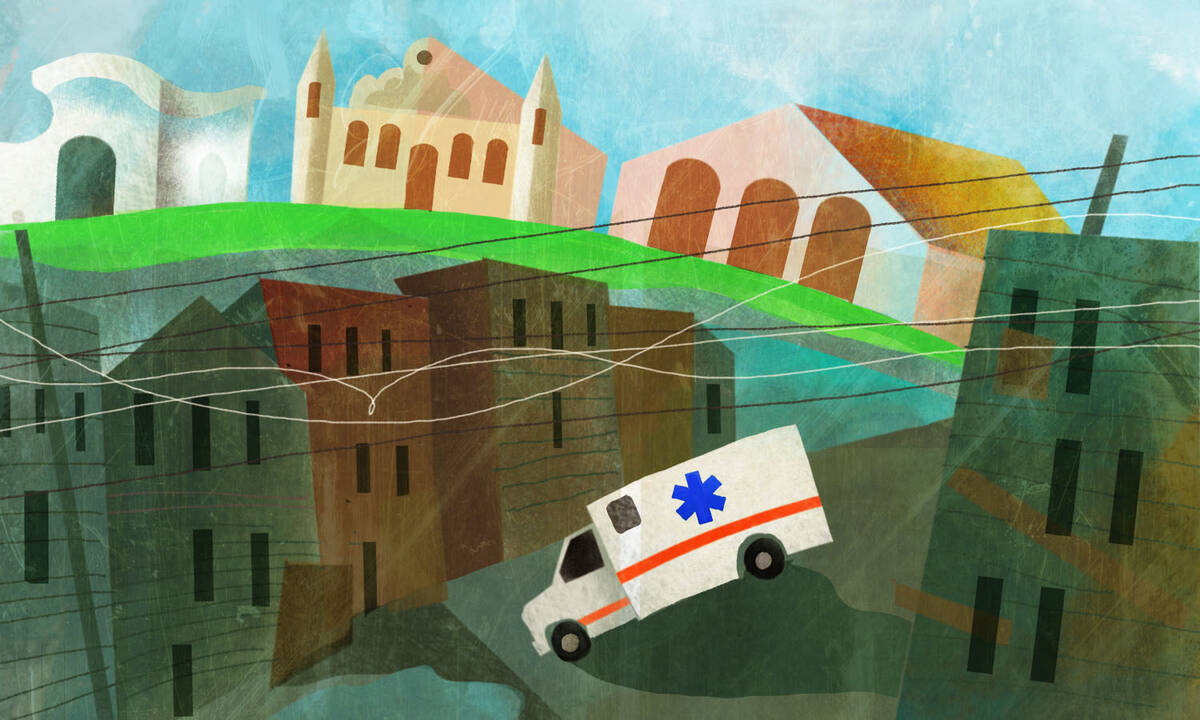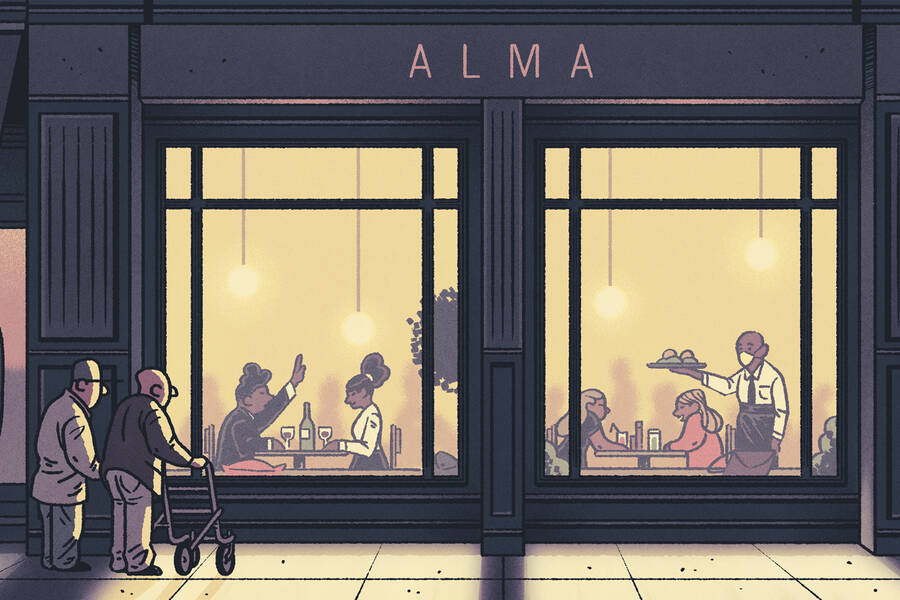While the average number of COVID deaths per million people, as of January 20, stands at 266 globally, many countries are well below or above that number. In South Korea, the number is 25 deaths per million, and in Australia, it’s 36. Yet in Italy, they’re experiencing 1,384 deaths per million people, in the United Kingdom 1,377, and in the United States 1,277. Similar differences are apparent in deaths per 100,000 people across U.S. states.
What factors are driving these huge variations?
Sergio Rebelo, a finance professor at Kellogg, together with coauthors Martin Eichenbaum, a professor of economics at Northwestern, and Mathias Trabandt of Freie Universität Berlin, decided to see if they could isolate any variables that would help explain why some regions are losing so many more lives than others. They explored various measures—like per capita GDP, the share of doctors per 1,000 people, and the share of the population over 65—in search of any that had a strong correlation to COVID death rates.
“We were asking, when you look across countries or across U.S. states, which variables are the best predictors of the death toll from COVID?” Rebelo says.
The team had a hunch going in. They expected that the percentage of the population over 65 in a given region would best predict its number of COVID deaths per million. They also suspected that GDP per capita would be a factor, and that high-income regions would have lower mortality rates. Other variables they thought might be in play included the share of doctors per 1,000 people, the size of the average household, the proportion of urban to rural areas, and perhaps even the average temperature, since colder climates may be more conducive to the virus’s spread.
As it turned out, none of these variables emerged as good predictors of COVID deaths. But another variable did: a country’s level of pre-COVID income inequality was by far the best predictor of the COVID death rate. The same finding emerged when the researchers studied variations in COVID death rates across U.S. states: higher death rates tend to occur is U.S. states with higher pre-COVID income inequality.
“That is a striking, unexpected finding,” Rebelo says. “All those other variables didn’t really matter when pre-COVID income inequality was included.”
Once they identified this key predictor, the researchers decided to explore the role of income inequality in COVID death outcomes.
They designed a model focused on the U.S. economy. The model implies that the poor have shouldered a disproportionate number of COVID deaths mainly because of disparities in access to quality healthcare and in health preconditions that long predate the pandemic.
Modeling a Pandemic Economy
To conduct this research, Eichenbaum, Rebelo, and Trabandt needed to ensure that the model reflected 2020’s real-world economic conditions.
“This task proved more difficult than we expected,” Rebelo says. Conventional business-cycle models use certain assumptions about how the economy behaves—and the COVID economy turned those assumptions on their head.
Typically, consumption among high-income people is smooth over time. But research looking at 2020 consumption and employment patterns in Portugal, the U.K., Spain, and the U.S. has documented a different response: consumption among high-income people dropped dramatically, even as this segment’s income stayed steadier than that of lower-income groups. On the other hand, poorer people experienced a bigger blow to their income but cut their spending less dramatically.
“Usually, you’d expect to see relatively smooth consumption for high-income people,” Rebelo explains. “Here, it is this group that has the most volatile consumption.”
The researchers sought to build a model that reflects this unusual pattern, so they could use it as a laboratory to study the ways in which income inequality might be tied to high COVID mortality rates.
Their model makes the realistic assumption that higher-income people tend to work in sectors that produce tradable goods, meaning goods that can be consumed without geographic constraints, such as anything sold online. Lower-income people tend to work in sectors that produce non-tradable goods, meaning goods that have to be locally consumed, such as eating in a restaurant, staying in a hotel, or going to a live entertainment show.
Motivated by empirical evidence, the researchers assume that working or consuming non-tradable goods, like restaurant meals, exposes people to a higher risk of COVID infection. The demand for these types of goods fell disproportionately as people tried to reduce their exposure to the virus. This drop in demand created massive job losses for low-income people.
A Double Blow
The researchers’ model reveals two central ways in which lower-income people suffered more during the pandemic.
The first was economic. Employment plunged the most for the quartile of U.S. workers whose income is the lowest, with a 28 percent drop in employment for this group, compared with a 14 percent drop for the quartile of workers with the highest income.
Secondly, those with lower incomes suffered a much more devastating death toll from the COVID pandemic. Why?
Here, the model offers some strong implications: it shows that the death rate among low-income Americans would have been a staggering 30 percent lower if this group had the same COVID case-fatality rate as high-income people. The researchers surmise that lower-income people presumably came into the pandemic with more preexisting health conditions that made them much more predisposed to succumb to the virus than those with more money.
“The model implies,” the authors write, “that preexisting inequality is a powerful force generating inequality in death.”
Even when the case-fatality rate is modified to be the same for both groups, the model predicts that the COVID death rate still would have been 23 percent higher for low-income people than for high-income earners. This is because low-income people are much more likely to be exposed to COVID on the job.
The researchers use the model to compute what the death rate would have looked like in late 2020 if the U.S. hadn’t used any containment policies, such as closing some businesses. If such policies had never gone into effect, the model finds, mortality rates would have been roughly 31 percent higher for low-income people and 27 percent higher for those earning more. At the same time, these policies disproportionately reduced the employment and earnings of low-income workers, heightening income inequality.
“We had to use blunt containment policies to reduce the death toll,” Rebelo says. “But that containment exacerbated how much the poor suffered in terms of their income and employment.”
The government tried to alleviate this suffering by sending stimulus checks to low-income people. These checks increased the demand for non-tradable goods and helped improve the employment prospects for people in these sectors, without significantly worsening the mortality rate for anyone.
Closing Yawning Gaps in Healthcare and Income
In Rebelo’s view, the COVID experience reveals the importance of closing the yawning disparities in people’s access to quality healthcare.
“This won’t probably be the last epidemic we will face,” Rebelo says, referring to the body of research predicting a coming rise in zoonotic infections. “We should be getting ready for the next epidemic, and part of getting ready is to have a more equitable healthcare system.”




